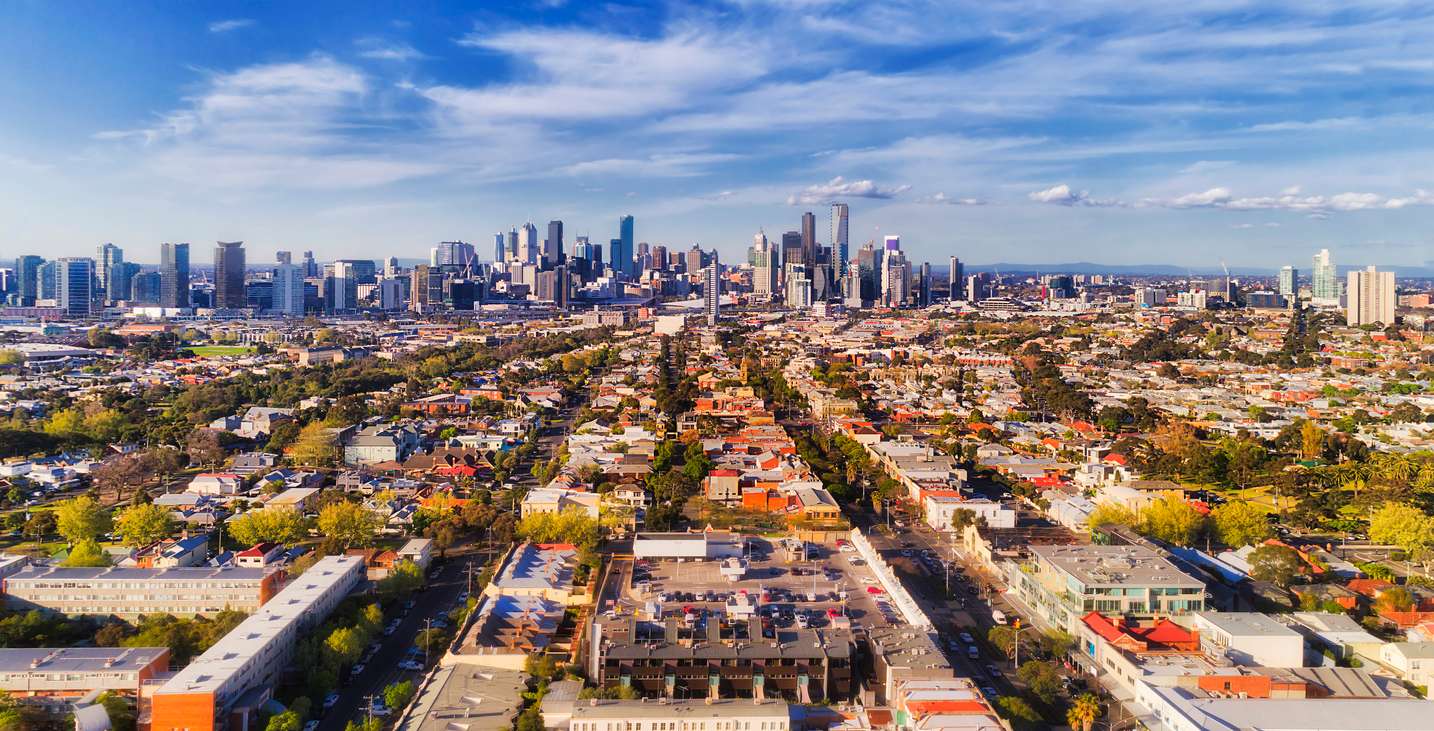Melbourne and VIC property market update - March 2020
In the past month, further measures have been established in order to slow the spread of Covid-19 in Victoria. Stage 3 restrictions are now in place and enforceable, which means that gatherings are now limited to no more than two people and all non essential activity must stop.
What does all of this mean for the Melbourne property market? We take a deep dive into how Covid-19 has affected the Melbourne real estate industry and the impact that it has had on property prices, clearance rates and rental yields.
Changes to the Melbourne real estate industry
To combat the spread of Covid-19, on the 26th March 2020, the Victorian Government required in-person real estate auctions and open inspections to cease. Following this announcement, Melbourne real estate agents have been quick to adapt, leaning on technology to conduct the buying and selling process remotely through virtual inspections and online auctions.
Impact on sales volumes and clearance rates
Overall, sales volumes have decreased as a result of weakened consumer confidence and rise in unemployment. Auction clearance rates also continue to decline as the market adjusts to online processes and more vendors choose to sell via private treaty.
In the week ending Sunday 5th April, 2020, REA reported 96 scheduled auctions with a preliminary clearance rate of 57%. The week previous saw 236 more auctions and a clearance rate of 83%. It is important to note that the unusually high amount of auction withdrawals due to the current ban on open auctions has pushed the clearance rate down as withdrawals are counted as unsold properties. At the moment, clearance rates are therefore not a true reflection on the performance of the virtual auctions.
“People are feeling a bit more optimistic now that they know they’re potentially going to have a regular income for at least the next six months."
Despite the impact on sales and auction volumes, Melbourne agents are still seeing great results. David Moxon, Principal and auctioneer from Barry Plant North Eastern Group says that buyers are still active in the current market, and they’re still approaching his agency to view properties despite the current restrictions on open-for-inspections.
“We’re still getting a lot of good enquiries” he said.
Mr Moxon also says that after the latest Job Kepper stimulus package was announced, the dark cloud hovering over the market seems to have somewhat lifted, especially in Northern Melbourne.
“People are feeling a bit more optimistic now that they know they’re potentially going to have a regular income for at least the next six months. This stimulus package has set a good foundation for more financial security”.
Melbourne and regional Victoria property values in March 2020

Melbourne property value
Houses
$819,611
Monthly change: +0.4%
Units
$589,042
Monthly change: +0.4%
Over March, Melbourne house prices have increased +0.4%. This is an increase of +3.2% for the quarter and +12.5% over the year. Property values for units have also followed suit, with a monthly increase of +0.4%, +2.2% growth for the quarter and +11.0% annual growth.
Out of the top ten sub-regions for annual change in dwelling values, three are in Melbourne.
Over the quarter, the Inner East has recorded the highest growth with an increase of +19.8%. The Inner South posted +14.6% growth and Inner Melbourne increased by +13.3%.
Looking at a monthly change however, these previously best performing capital city regions recorded a month on month decline. Melbourne's Inner East region recorded a -0.2% drop while the Inner South also edged lower over the month.
Regional Victoria property value
Houses
$410,337
Monthly change: +0.8%
Units
$286,007
Monthly change: -0.4%
Dwelling values for regional Victoria houses have had positive gains, reporting an increase of +0.8% for the month, +2.6% over the quarter and +2.5% over the year.
Regional Victoria units however have fallen into the negatives with -0.4% in March. Looking at a longer time frame, regional units have still posted positive growth for the quarter at +0.9% and for the year at +5.8%.
Of the top ten best performing regional areas for annual change in dwelling values, two are located in Victoria. The South West and coastal region of Warrnambool recorded growth of +7.0% while the North West saw an increase of +6.6%.
Read: A guide to selling a property during Covid-19
Rental yields
The past twelve months has seen rental rates in Melbourne risen slightly to 1.5% and 2.7% in regional Victoria.
With rents remaining relatively stagnant and house prices rising over march, rental yield continues to compress in Melbourne and regional Victoria.
Gross rental yields for Melbourne have been trending lower at 3.2% but remain above the previous low of 3.07% recorded in October 2017. A similar story is seen in regional Victoria where rental yields are at 4.5%, the lowest yield of all the regional areas. This is 0.5% lower than the combined regional average.
Landlords and tenants during Covid-19
Prime Minister Scott Morrison has announced a moratorium on evictions for residential tenants during this pandemic but has emphasised that it is not a ban on rents and asks that tenants and landlords negotiate directly.
The Victorian government is urging landlords and agent to “be compassionate” with tenants who may be affected by the crisis.
If you are a tenant unable to make rent repayments, the Tenants Victoria suggest that the first thing you do is notify your landlord or agent as early as possible. You may be able to work out a new payment plan which could include relief from paying rent for a period of time or an arrangement to catch up on instalments at a later time. If you are able to come up with a new payment plan, it is important that you put it in writing.
Read more information and advice here.
What does this mean and what to expect in the months ahead?
Even though property prices have increased during March, growth was significantly slower for the second half of the Month as consumer confidence took a tumble and social distancing policies came into effect. The national reading this month also emerged as one of the lowest monthly price gains since the market lifted in July last year.
CoreLogic head of research Tim Lawless said that the housing market won’t be immune to a drop in sentiment however the impact on dwelling values is uncertain.
"Once the virus is contained, we expect economic conditions to quickly improve... when that will be, remains highly uncertain"
“The extent of any fall in housing values is impossible to fathom without first understanding the length of time this health and economic crisis persists”.
Due to the temporary nature of this crisis however, Mr Lawless said that the impact of house prices may be cushioned more so than sales.
“Considering the temporary nature of this crisis, along with unprecedented levels of government stimulus, leniency from lenders for distressed borrowers and record low interest rates, housing values are likely to be more insulated than sales activity,” he said.
With many unknowns, one thing is certain. The faster we contain the virus, the quicker economic operations can be brought back and reduced risk on housing values.
Tim Lawless concluded “once the virus is contained, we expect economic conditions to quickly improve, driving a turnaround in consumer spirits which should flow through to housing market activity. When that will be, remains highly uncertain.”
As of 6th April 2020, Victoria has 1,158 total confirmed cases, an increase of 23 since yesterday - 940 in metro Melbourne and 212 in regional Victoria. For daily updates on Covid-19 cases visit the Victoria State Government Health and Human Services








